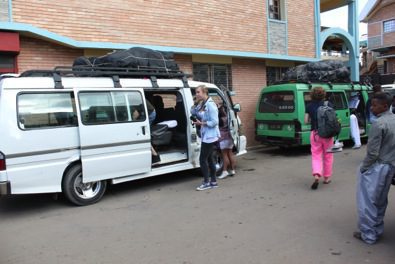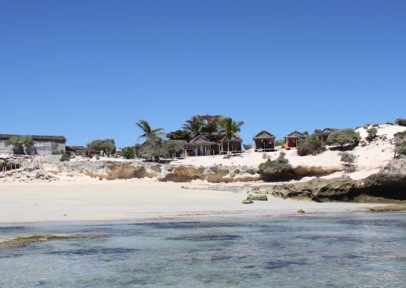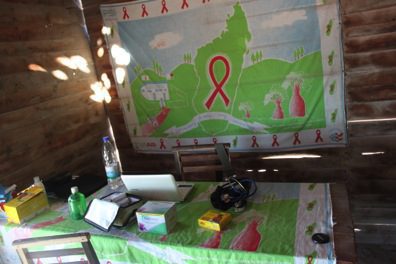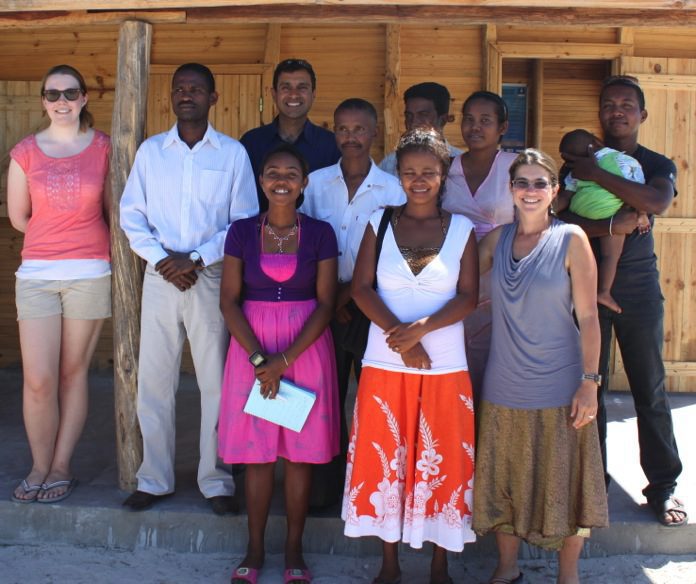by Samantha Cockburn, Medical Elective with Safidy, Madagascar
Three years ago I received an email from my medical school advertising a lecture aimed at local GPs entitled ‘Is Sex Going To Kill Us?’ given by Professor John Guillebaud, Emeritus Professor of Family Planning at UCH in London. The title sparked the curiosity of myself and a group of friends, and we therefore decided to attend. It turned out that this decision would shape my whole elective. The lecture was about the effect that population growth will have on the world, but although it was very interesting, it was not the lecture that would have a major effect on my elective. It was instead the second lecture, given by Dr Vik Mohan, about a Population-Health-Environment (PHE) programme entitled Safidy that he established in Madagascar. His speech told of a family planning programme that was simple yet effective in addressing the challenges of working in rural Madagascar. After introducing myself to him and explaining my interest in doing my elective with the programme, a meeting was arranged to discuss it in more detail. This lead to a deeper involvement in the programme than I had first anticipated, but Vik’s enthusiasm and passion for Safidy is infectious. I spent the next three years helping fundraise and publicise the programme, at the same time as planning my own trip to Andavadoaka for my elective. The more involved I became, the more excited I was to see the programme at work.
The Safidy (meaning choice in Malagasy) programme was established by Vik and Blue Ventures five years ago when he travelled to Andavadoaka. He went as an expedition medic on a diving expedition with Blue Ventures. However, the local community highlighted to him during his trip the need for family planning services, and so the Safidy programme was established in response to this. Five years on, Safidy offers family planning services throughout 40 villages in the Velondriake area, and now also includes a maternal and child health initiative, and water and sanitation activities.
I travelled to Antananarivo, the capital city of Madagascar, at the start of August 2012 with 11 other volunteers. In order to get to the site in Andavadoaka we spent three days driving the length of the country in rickety old minibuses, with a few stops on the way in order to see lemurs, explore the national parks, and pick up a few souvenirs. We eventually arrived in Toliara, a city in the southwest of the country from where we would take 4×4’s for seven hours along sandy tracks in order to get to Andavadoaka the following day. The next two days were spent settling into the site and learning the way of life. Our accommodation for the next five weeks were wooden huts located on the outskirts of the village and with a stunning view of the beach.
While the rest of the volunteers went off in boats everyday at 6am to start diving, I was introduced to the Safidy team based in Andavadoaka. Caroline, as the newly appointed programme coordinator, was my main point of contact and helped to decide what I should do everyday. Clarisse, a local Malagasy doctor, was in charge of running the new maternal and child health initiative while Fanja runs the well-established family planning services. The fourth and final member of the team was Mahasoa who is responsible for running the water and sanitation activities. I was fortunate that my trip coincided with a visit from Vik. This meant that for the two weeks that Vik was there he was able to explain to me how the Safidy programme actually worked on the ground in Andavadoaka and the surrounding area.
The main highlight of my trip was the opening of the new Safidy clinic building during my third week (in August 2012). The family planning clinics in Andavadoaka had been running from an old, disused, single-room hut located on the edge of the beach. However, earlier in the year, a local businessman and supporter of the Safidy programme donated some of his land in order to make space for a new built-for-purpose clinic. The new building (comprising a waiting room, stock room and consultation room complete with a new locally made examination table) was finished just before I arrived, with the official inauguration planned for the 22nd August, the 5 year anniversary of the Safidy programme. The week preceding this was spent transferring all the materials and stock from one building to another and preparing the new clinic for its opening.
The day of the inauguration saw local people, doctors and medical officials from the surrounding area arrive in time for the opening ceremony and speeches. This was followed by the oldest man in the village performing the ancestral blessing on the building and thus blessing all the work that the project will do within it. After a lunch of sacrificial goat curry prepared by the local women’s association, a cake cooked by Fanja and a spot of dancing by everyone present, the celebrations were over and preparations began for the first official antenatal clinic the following day. Clarisse and I arrived bright and early the following day in order to give the new clinic a final clean before the patients arrived. The first antenatal clinic was a solid success. We saw 13 patients during the morning and had to turn people away in order to not over-run into the family planning clinic in the afternoon. As a result, the antenatal clinic now lasts all day in order to avoid turning people away. This clinic was the first of its kind in the area. Without this service women from the area would have to travel at least 3 hours up the coast to the nearest hospital in order to gain access to antenatal care.
The five weeks I spent in Andavadoaka were varied and enlightening. My other activities included:
- Attending weekly family planning clinics in Andavadoaka
- Attending weekly outreach family planning clinics in the local area, travelling either by zebu cart or pirogue (small boat) for several hours.
- Attending weekly maternal and child health clinics in Andavadoaka
- Attending training sessions provided by Marie Stopes Madagascar for local women acting as Community Based Distributors (CBDs) on family planning and communication skills
- Preparing a PowerPoint presentation on how to make home birthing kits for local Traditional Birth Attendants (TBAs)
- Making new home birthing kits for the local TBAs
- Attending several team meetings discussing current activities being undertaken by Safidy and plans for the future
- Inspecting the local wells and beach with Mahasoa as part of the water and sanitation initiative
- Educating local children and teenagers on sanitation and sexual health
- Writing up several case studies, which I then discussed with Vik
It’s hard to put my experiences from my elective into words as it’s unlike anything I have ever done. Prior to this trip I hadn’t traveled outside of Europe, south of the equator, or to a developing country. I am grateful for the opportunity to do all three of these in one trip and I can honestly say that my time in Madagascar has broadened my horizons and developed my understanding of the problems in delivering healthcare in these environments. This elective meant more to me because I have been personally involved with this programme for three years now, and I am thankful for the opportunity to witness first-hand the impact that Safidy has in Velondriake, as well as getting involved myself. As a result, I am determined to remain involved with Safidy and continue to support it in the future.
This report is also available on The Royal College of Obstetricians and Gynaecologists website.





